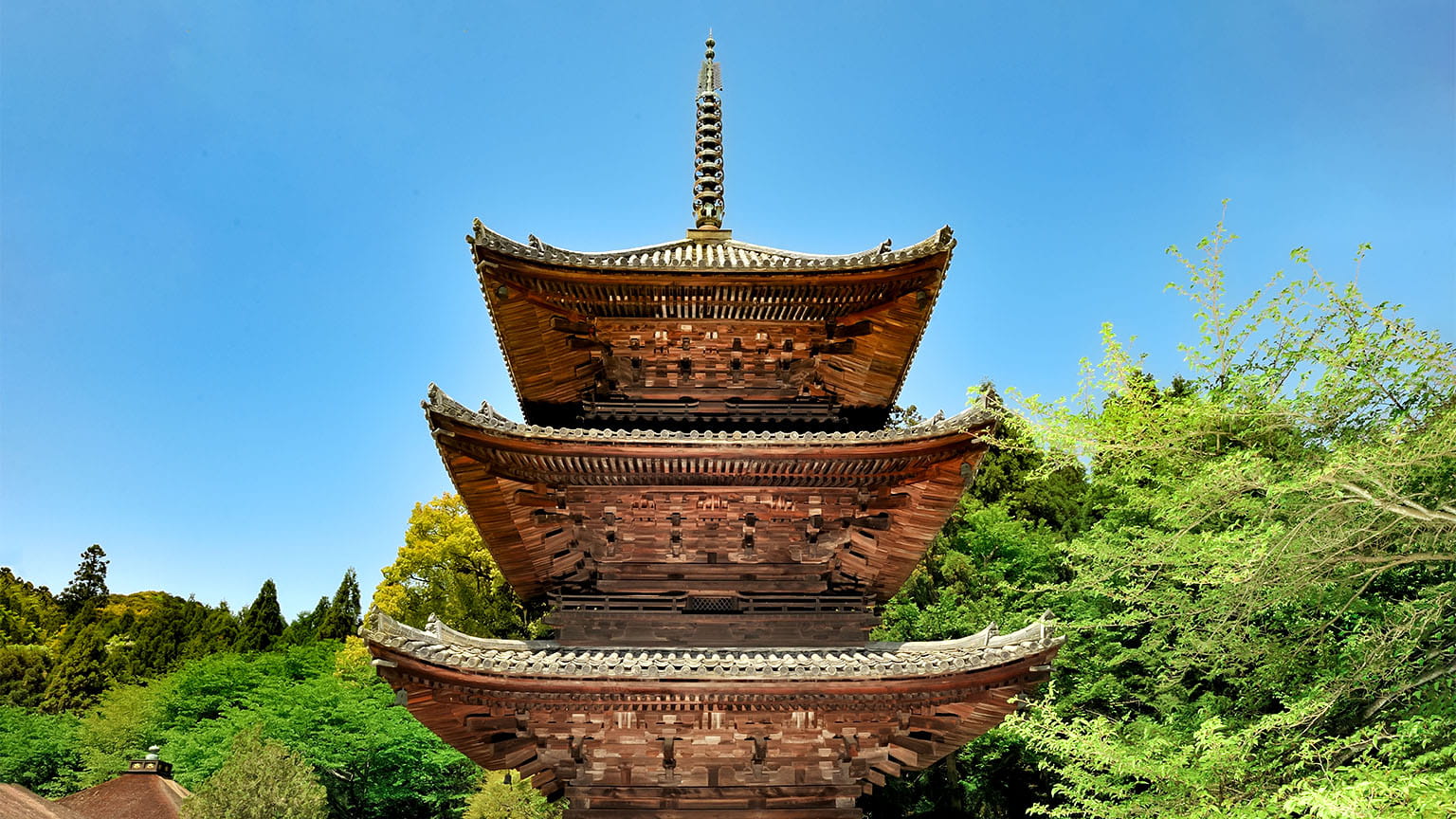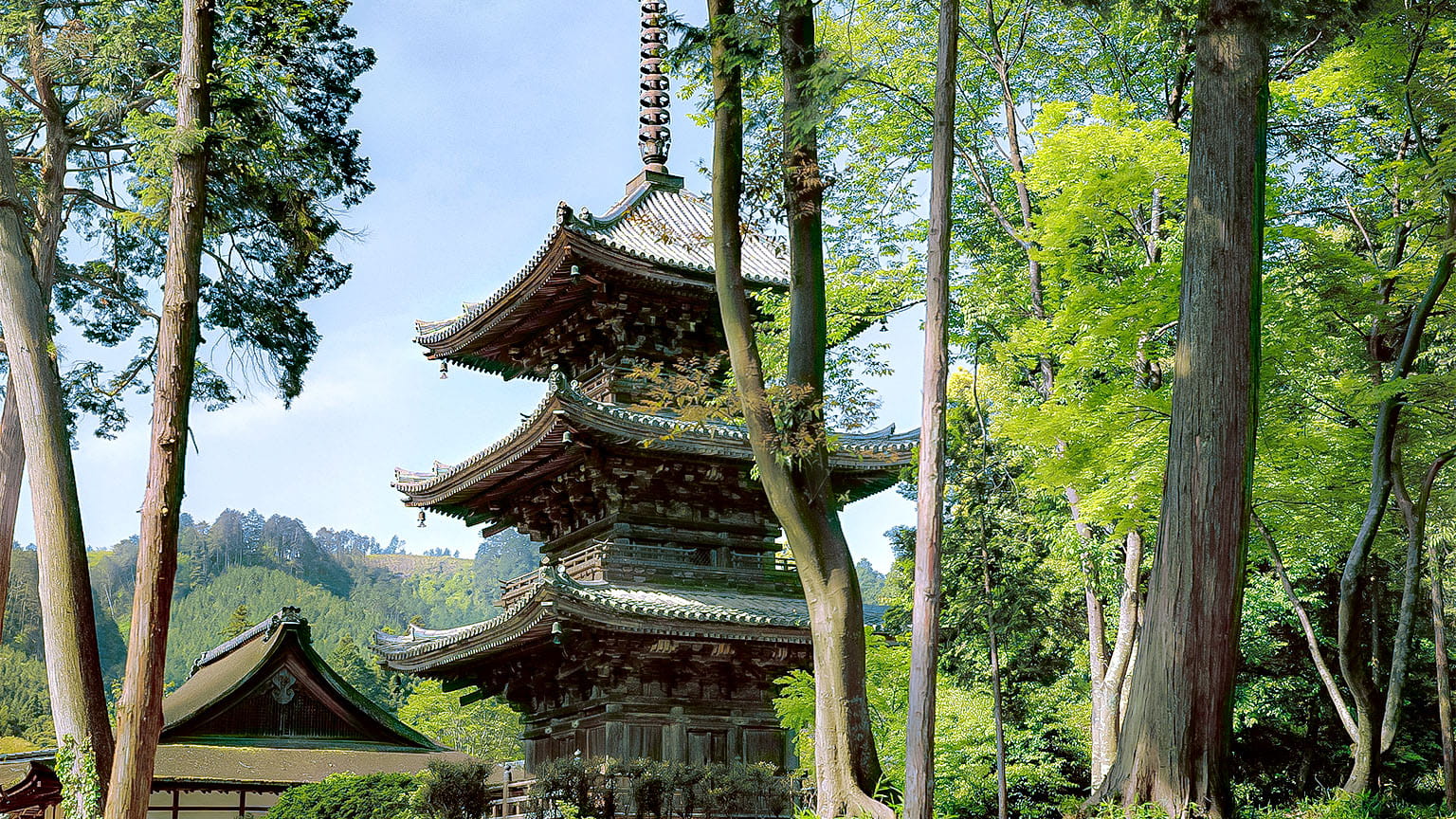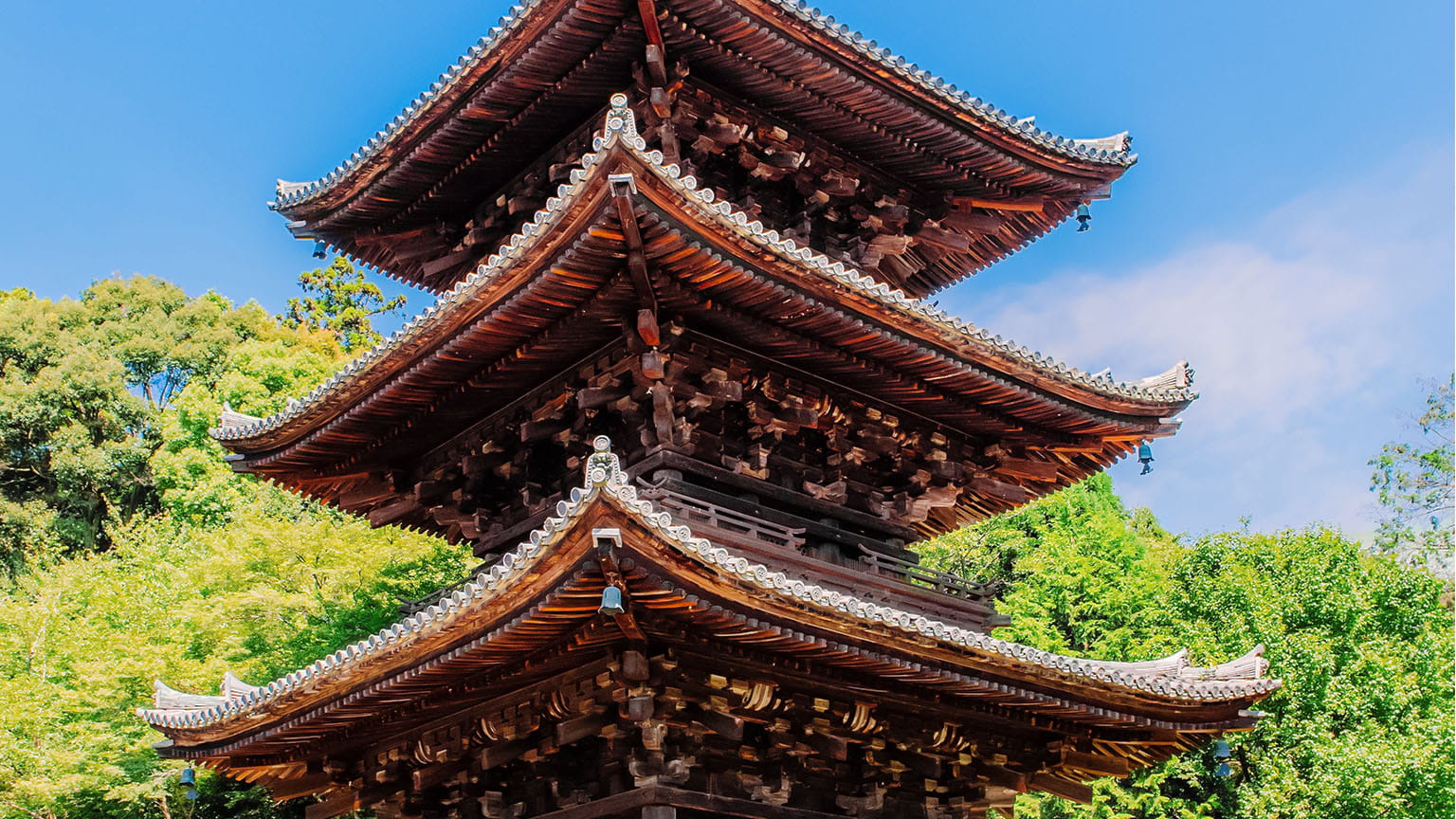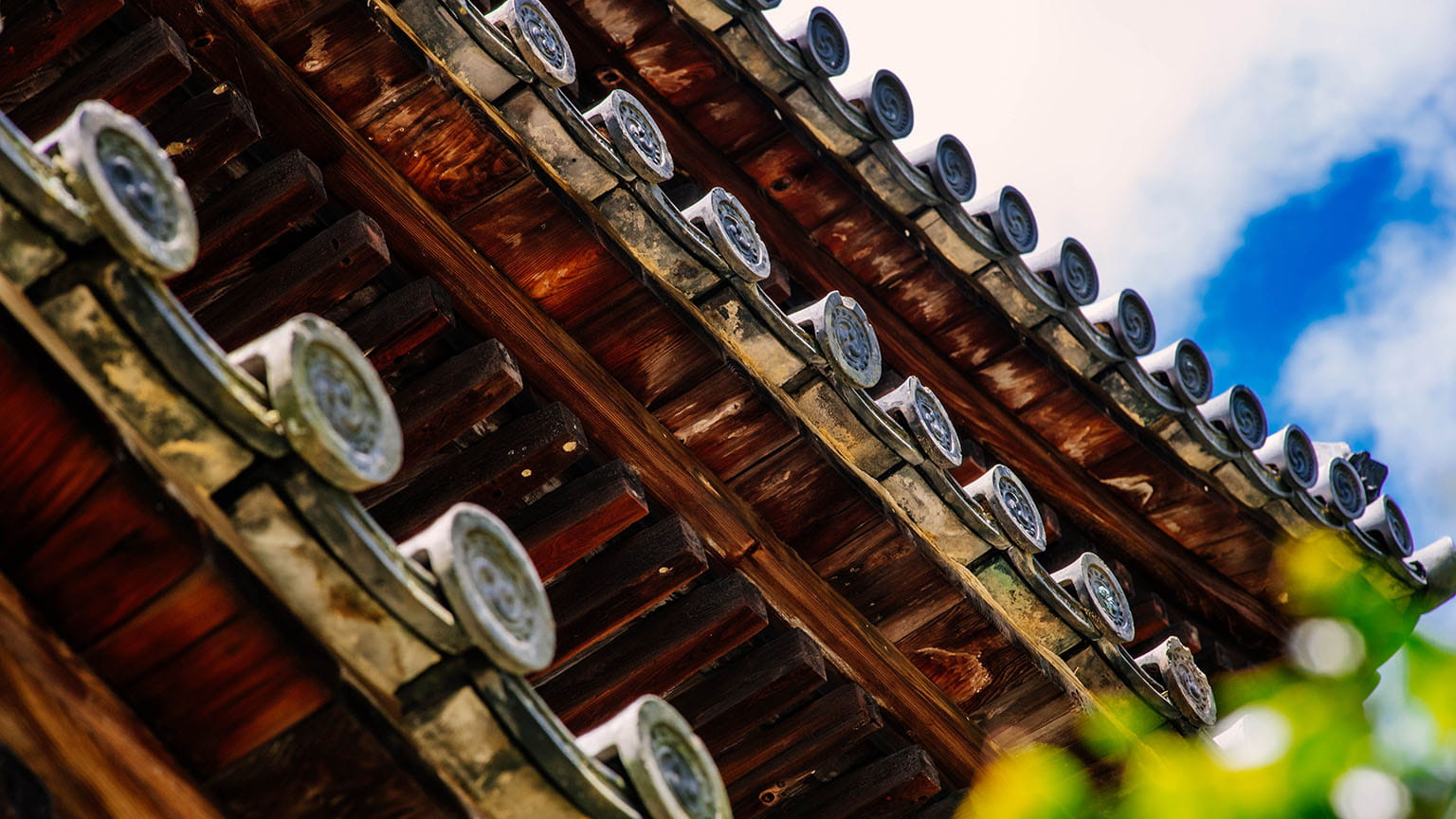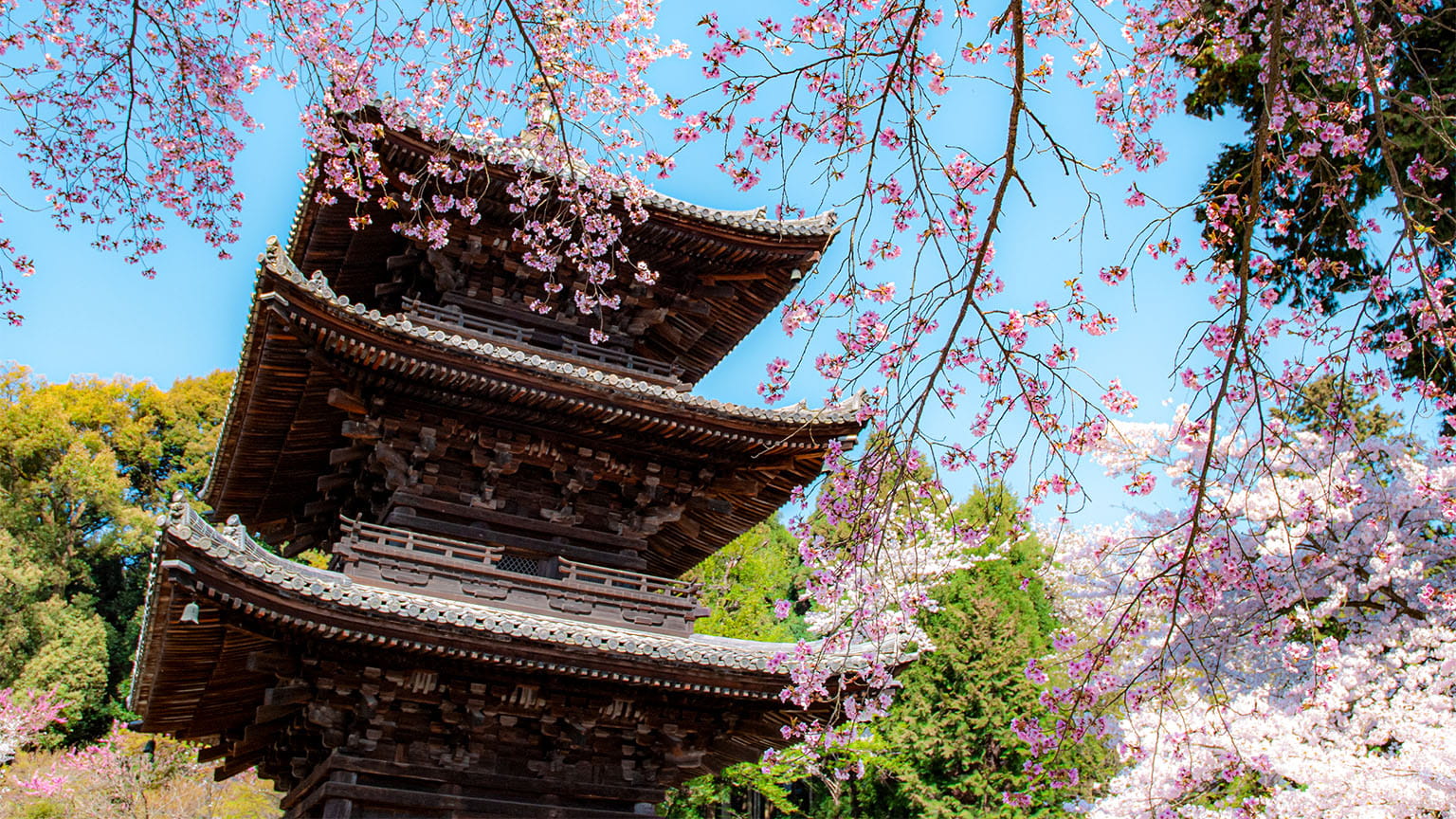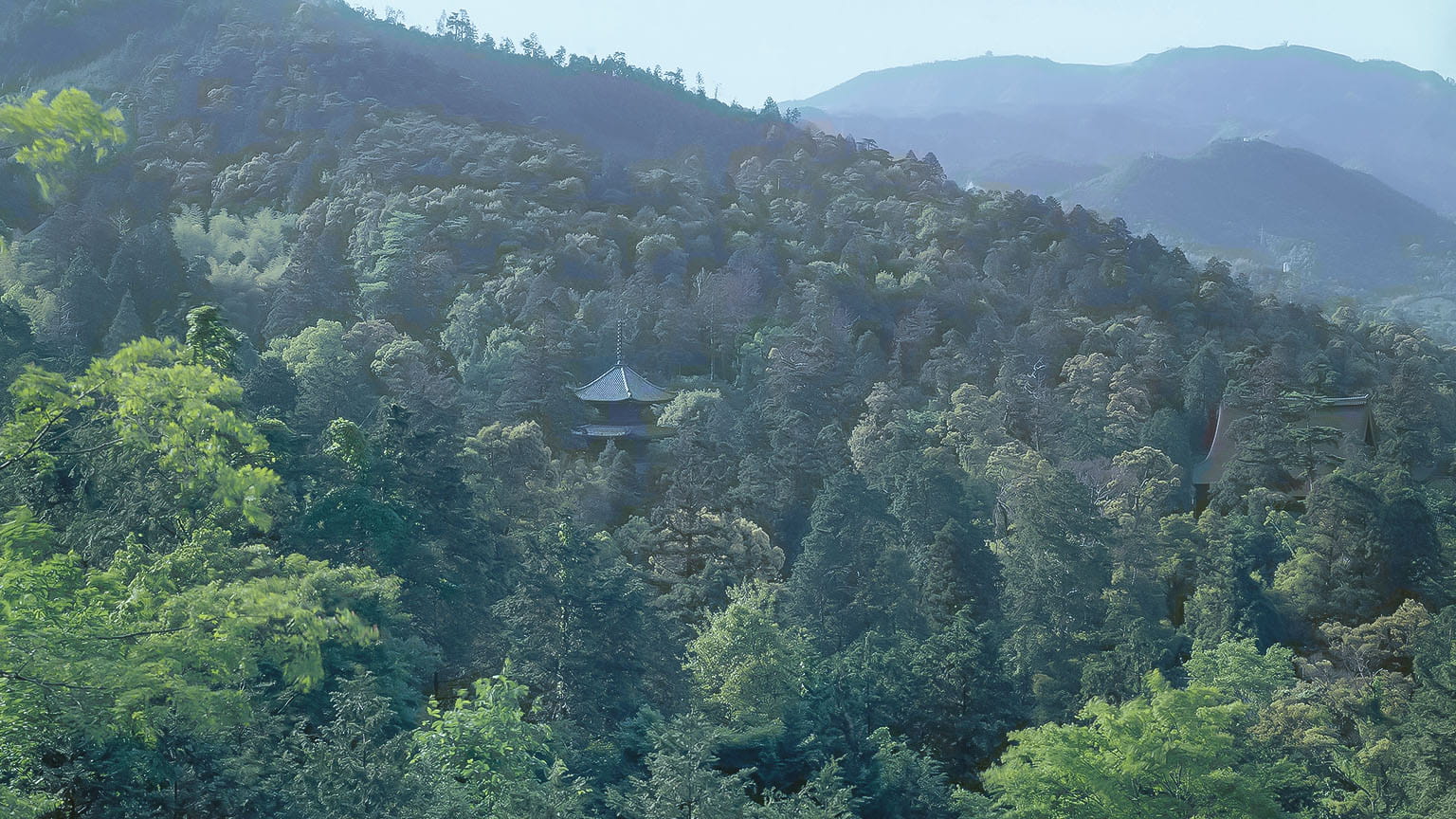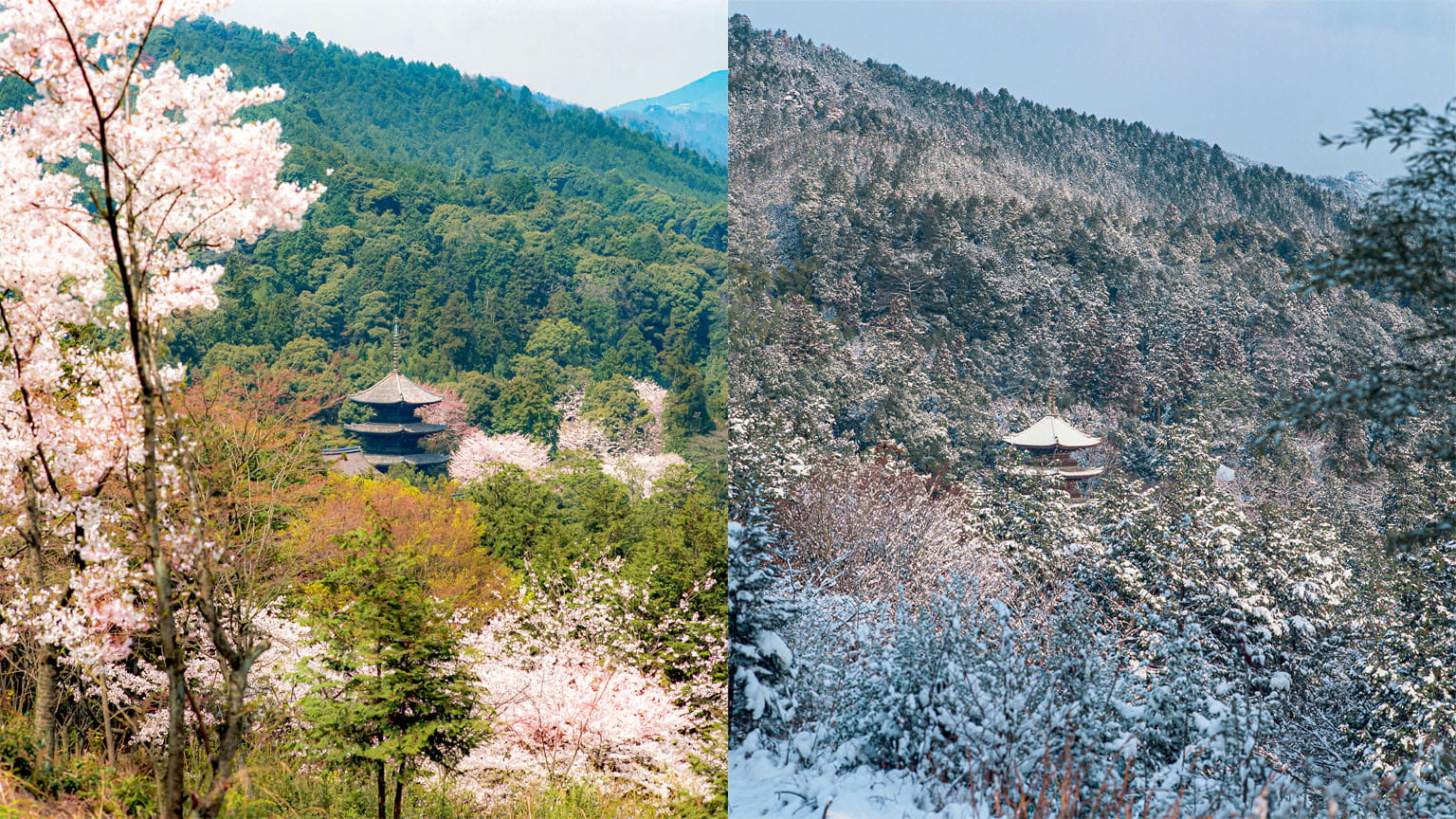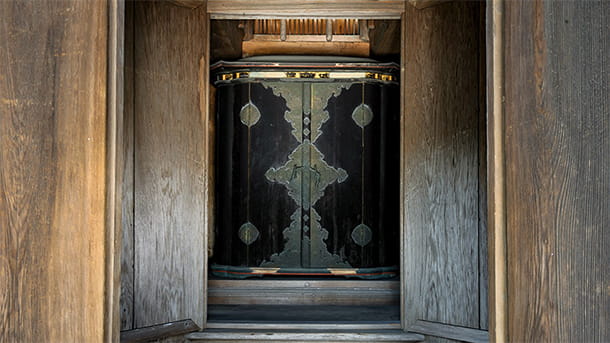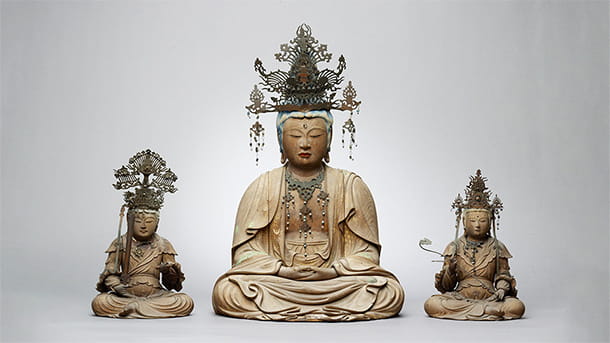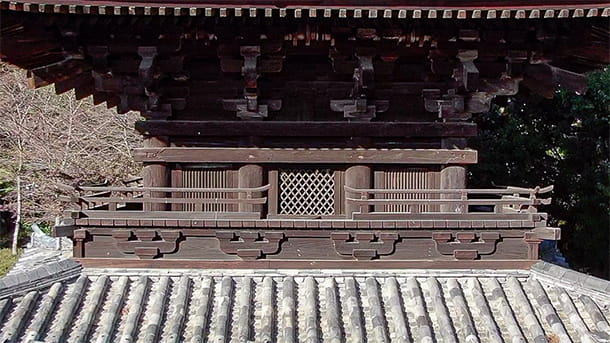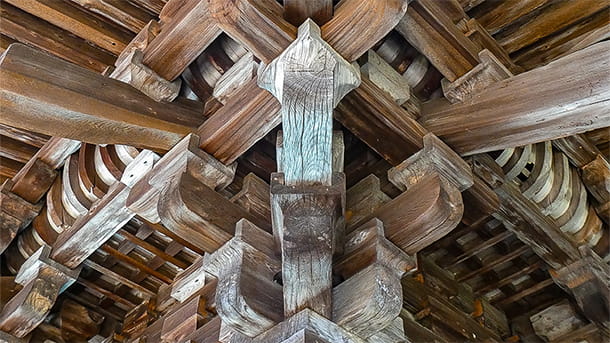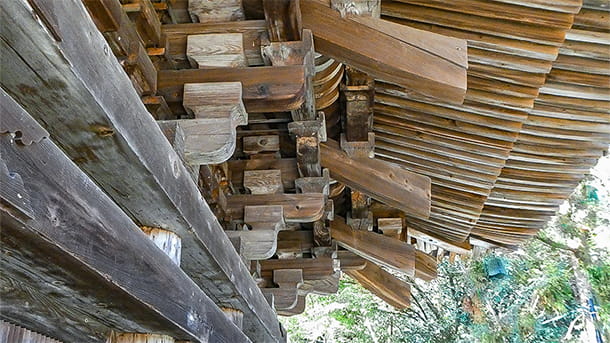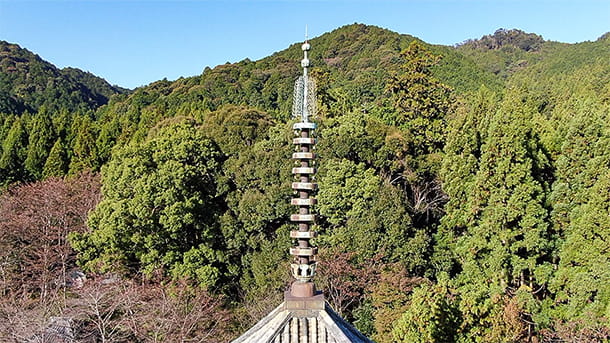“Tokugawa Ieyasu”
Tokugawa Ieyasu (1542–1616) was the first shogun of the Tokugawa Shogunate (in office 1603–1605). Ieyasu was under Imagawa Yoshimoto, then allied with Oda Nobunaga. Later, he conciliated with Toyotomi Hideyoshi. He was then offered the eight Kanto provinces by Hideyoshi in 1590 and entered Edo Castle. After the death of Hideyoshi, he entered Fushimi Castle to govern. At the Battle of Sekigahara in 1600, he defeated Ishida Mitsunari and others. In 1603, he was appointed as a Seii Taishogun (shogun) and established the Edo Shogunate. Soon he abdicated, and Tokugawa Hidetada took over the position as shogun. Being called Ogosho (retired shogun), he was still involved with important matters, even though he had retired in Sunpu in 1607. He destroyed the Toyotomi clan at the Siege of Osaka and established the foundation of the shogunate that would last 260 years. His posthumous name is Toshodaigongen.
“Sesonji Temple”
A Soto sect temple located in Hiso, Oyodo-cho, Yoshino-gun, Nara Prefecture. It is an old temple and was reportedly built on the right bank of the Yoshino River from the Asuka period (538–710) to the early Hakuho period. It used to be called Hisodera Temple, and its grounds, the Remains of Hisodera Temple, were designated as a National Historic Site in 1927. It is also called Yoshinodera Temple and Genkoji Temple.
“Toyotomi Hideyoshi”
A warlord in the Azuchi-Momoyama period. First, he served to Oda Nobunaga, and as soon as Nobunaga died due to the Honnoji Incident in 1582, he declared himself as the successor, defeated his enemies and unified the country. From 1583, Hideyoshi began the construction of Osaka Castle, the castle tower of which has a lavish five-story structure on the outside and an eight-story structure inside that was suitable for the supreme ruler. While he was called Hotaiko, luxurious Momoyama culture, including tea ceremonies and paintings of the Kano school, flourished.
Relations between Miidera Temple and Hideyoshi were generally favorable; however, in 1595, his later years, he suddenly imposed an order to Miidera Temple to confiscate all of the assets belonging to the temple. After Hideyoshi’s death in August 1598, Miidera Temple was restored by his legal wife, Kita no Mandokoro.
“Fushimi Castle”
The castle was built by Toyotomi Hideyoshi in Mt. Higashi-fushimi, Fushimi Ward, Kyoto City. Construction was begun in 1592. It was destroyed by an earthquake in 1596 and reconstructed in Mt. Kohata. Then, the checkpoints in Kyoto were put under control. Later the Edo Shogunate disposed of the castle, and the remains were transferred and still remain in some temples such as Daitokuji Temple, Nishi Honganji Temple and Toyokuni Shrine.
“Shaka Triad statues”
A triad form with a statue of Shaka (Gotama Siddhartha) in the center and two kyoji (attendant figures) on either sides. For kyoji, any of the following combinations of two bodhisattvas are normally placed: Monju (Manjushri) and Fugen (Samantabhadra), Yakuo (Bhaisajyaraja) and Yakujo (Bhaishajyasamudgata) or Anan (Ananda) and Kasho (Kasyapa).
“balustrades”
For fall protection, handrails are attached to the outer edge of the corridor that encircles the floor.
“kumimono”
It is mainly located on top of a pillar. Its structure is interlocked bearing blocks and bracket arms to support an eave purlin that supports rafters. Also called tokyō or masugumi.
“mitesaki”
One of tokyō (a system of supporting blocks and brackets). Looking from the side, three bearing blocks are attached to the wall, making three rows of blocks.
“sorin”
A part that is made of a metal and placed at the top of the pagoda. Although only a part of the finial consists of kurin (nine rings), the whole part of the sorin is commonly called kurin (ku means nine).


